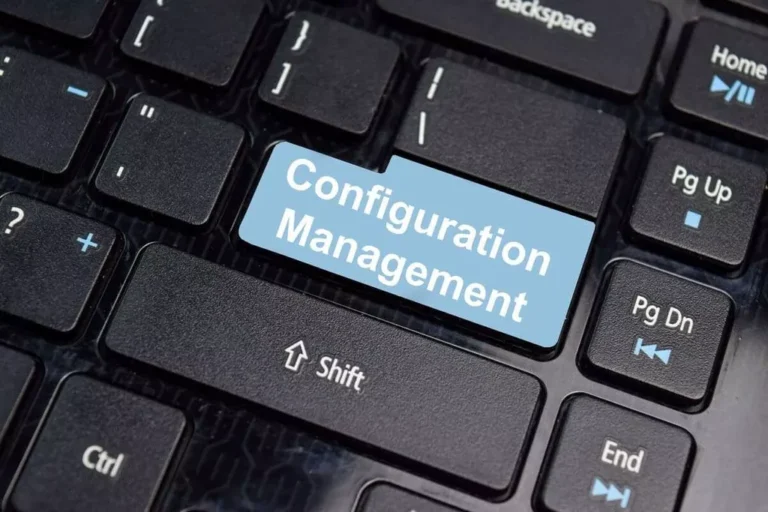Understanding Software Сonfiguration Management: Why It Matters

In a collaborative coding environment, where several developers work and update the project simultaneously, SCM acts as the glue that binds their efforts. Through efficient version control and change management, it enables seamless collaboration, allowing developers to work concurrently without jeopardizing the integrity of the code. In this guide, we prepared an overview of software configuration management, its benefits, and its importance for DevOps teams when driving their products to market.
Key Components
Software Configuration Management (SCM) involves various elements that collectively contribute to the effective management and control of software development processes. Each component serves a specific purpose in ensuring software’s reliability, traceability, and maintainability throughout its life cycle. Here are the key components:

We are confident that we have what it takes to help you get your platform from the idea throughout design and development phases, all the way to successful deployment in a production environment!
Version control
Also known as source code control or revision control, it is the practice of tracking and managing changes to source code or other artifacts. It allows multiple developers to work on the same project concurrently without conflicts. It maintains a history of changes, enabling the team to revert to previous states if needed.
Change control
Change control is the process of managing and controlling alterations to software artifacts. It includes requesting, evaluating, approving, and implementing changes in a systematic way. Its main task is to ensure that changes are made in a controlled manner, preventing unauthorized or unapproved modifications. Using a configuration management database (CMDB) that encompasses change management allows for tracking alterations to both software and non-software components, ensuring a comprehensive view of all modifications across the process.
Configuration control
Configuration identification and control involves uniquely identifying and labeling the various configurations of software artifacts. This includes version numbers, build numbers and other identifiers. It provides a systematic way to manage and reference different versions of the software. Application configuration management aids in tracking and understanding the evolution of the software.
Release management
Release supervision encompasses planning, scheduling, and coordinating the release of software to end-users. It involves packaging and delivering the correct configuration to users and ensures that the software is released in a controlled and well-documented manner. The main task of this procedure is to help manage the transition from development to production and ensure that users receive a stable and functional product.

Importance of SCM for Software Development
In contemporary software development, the complexity and scale of projects demand effective control and coordination of diverse elements. Software configuration management stands as a linchpin in this endeavor, offering a systematic approach to handling the progress of development. By using version control systems, developers can work concurrently on different aspects of a project, tracking changes and providing a historical context for every modification. This not only enhances collaboration but also facilitates the efficient merging of divergent lines of development, minimizing conflicts and streamlining the integration of new features or bug fixes.
Moreover, the software configuration management process addresses the intrinsic challenges associated with change management. As software evolves, modifications are inevitable, and SCM provides a structured framework for managing and documenting these alterations. Additionally, it ensures the reproducibility of software builds, aiding in debugging, testing, and addressing issues systematically. Through these mechanisms, SCM significantly reduces the risks associated with software engineering, promoting stability, reliability, and the delivery of high-quality software products.
Benefits of Software Configuration Management
Implementing SCM in software development offers several key benefits:
- Supports multiple developers working concurrently on different aspects without conflicts, fostering efficient collaboration through features like branching and merging.
- Enhances traceability by linking changes to specific requirements, promoting transparency and accountability within the DevOps team.
- Integrates with Continuous Integration and Continuous Deployment processes to monitor SCM repositories for changes, automatically triggering builds and tests.
- Streamlines change management with a structured approach, preventing unauthorized modifications and ensuring only approved changes are integrated.
- Reduces the risks associated with software engineering by providing a controlled process, minimizing the likelihood of errors and conflicts.
- SCM tools include configuration auditing features, which are crucial for compliance with policies, standards, and regulatory requirements.
- Ensures efficient build and release management, reducing deployment issues and enhancing overall reliability.
Moreover, SCM aids in effective documentation control, keeping it synchronized with the evolving software contributing to better understanding and maintenance.
Common Tools for SCM
Git and Subversion (SVN) are widely used version control systems. Developers use Git commands to commit changes, create branches, and merge code. Platforms like GitHub and GitLab provide hosting services for Git repositories.
Jira Software is a project management tool that includes change control features. Teams can create issues for proposed changes, manage workflows for approvals, and link changes to specific development tasks.
Jenkins is a popular tool that integrates with SCM systems like Git. It automates the build process, pulling the latest code from the repository, compiling it, and producing executable artifacts.
Apache Maven refers to the build automation tools that assist in release management. It can package and distribute software releases based on configurations specified in a project’s POM (Project Object Model) file.
Travis CI is a CI/CD service that integrates with SCM repositories. When changes are pushed to the repository, Travis CI automatically triggers builds and tests based on the configurations defined in the project’s configuration file.
Conclusion
By providing essential functionalities such as version control, change management, and collaborative development support, SCM ensures that software teams can work efficiently, maintain code quality, and deliver reliable products.
The impact of SCM is evident in its ability to address challenges associated with the dynamic nature of software development. Traceability, accountability, and the systematic handling of changes contribute to project visibility and risk mitigation. Whether it’s in the precision-required aerospace sector, the data-sensitive healthcare industry, or the fast-paced world of gaming, SCM brings order to complexity, enabling teams to manage configurations, control changes, and deliver high-quality software.
Top Articles
ABC of DevOps Testing: Types, Best Practices, and Everything You Need to Know
I am here to help you!
Explore the possibility to hire a dedicated R&D team that helps your company to scale product development.






